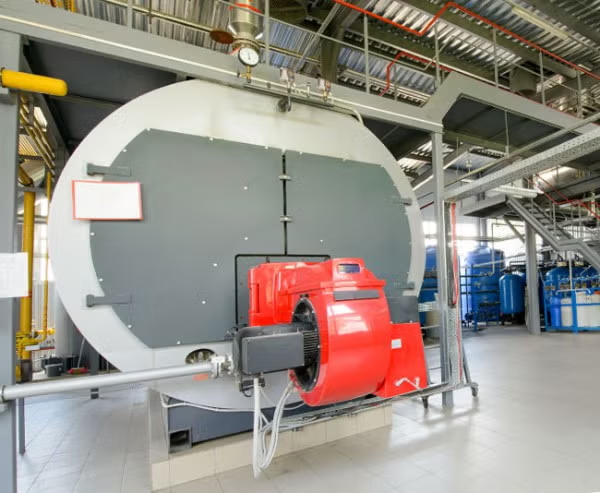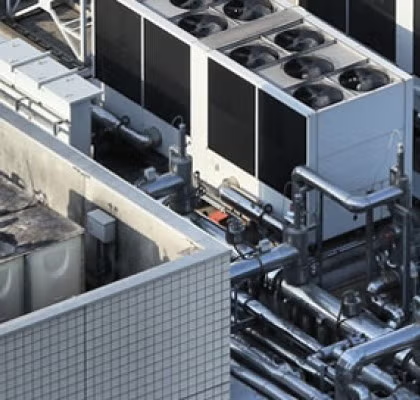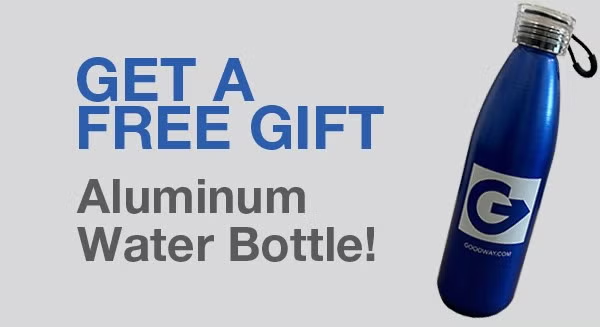Cleaning Tubes in Boilers, Chillers & Heat Exchangers

In firetube boilers, hot combustion gasses pass through the tubes, depositing soot and scale on the tube walls. Heat transfer properties of the tubes are reduced as the layer of deposit builds up and the boiler must work harder to provide the required heat. This causes undue wear on motors, blowers and controls, resulting in higher operating costs and increased fuel consumption. Regular cleaning of the fireside surfaces, yields big payoffs in lower operating costs and fuel savings. No matter what fuel is burned, firetubes have to be cleaned.
Various methods have been employed over the years for cleaning boiler firetubes. Firetubes were traditionally cleaned manually by using a brush mounted on a long rod, which was manually pushed through the tubes - a dirty, labor intensive job. In some cases, firetubes were washed out with a fire hose, creating a huge mess.
In many cases, nowadays, these methods prove to be impractical and ineffective, taking too much time and labor. Semi automatic equipment has been developed, which speeds up cleaning operations and does not create the mess associated with firetube cleaning. One such device, mechanically drives a stiff brush, or scraper through the tube, while a powerful vacuum simultaneously collects the soot and scale. Because the job is easy, tube cleaning can be performed more often, resulting in much lower operating costs.
In some firetube boilers, such as waste heat and process boilers, scale build up occurs, in which a simple in-out brushing action cannot effectively clean. A rotary cleaning action is required to remove the scale deposit. One approach is the use of a rotary flexible shaft machine, which spins a cleaning tool through the tube, while a vacuum collects the loosened deposits at the same time. Many operators find this equipment much easier to use than turbine motors, or a drill with a rod attached.
In watertube boilers, water traveling through the tubes is heated to very high temperatures, causing the solids in the water to settle onto the tube surfaces. Scaling is a common problem in watertube boilers. One cannot rely on water treatment alone to prevent scale build up. Just as is the case with firetube boilers, scale in watertubes leads to the same high costs. Again, regular cleaning of the tubes pays dividends.
Traditional watertube cleaning equipment consisted of an air, or water driven turbine motor attached to the end of a hose, with a cutter head mounted on the front of the turbine. This equipment proved to be awkward to use, somewhat expensive and difficult to maintain. The same rotary flexible shaft approach used in firetube boiler cleaning can be employed with watertubes. Air powered machines of this type are in use for this application and users find it easier to handle - it's more powerful and less costly.
HOW DEPOSITS ON BOILER TUBES AFFECT HEAT TRANSFER
Soot Build Up
1/32"
1/16"
1/8"
Heat Loss
12%
24%
47%
Increased Fuel Consumption
2 1/2%
4 1/2%
8 1/2%
Scale Build Up
1/32"
1/16"
1/8"
Heat Loss
8%
12%
20%
Increased Fuel Consumption
2%
2 1/2%
4%
CLEANING CHILLER TUBES
Fouled tubes in water cooled chillers cause the chiller to consume more energy to achieve the desired cooling output. Regular chiller tube cleaning will lower operating costs and extend equipment life. A clean chiller cycles less often, thereby reducing the load on motors, pumps and bearings. Although helpful, water treatment will not prevent the need to clean the tubes.
A popular tube cleaning method in the past was cleaning with chemicals. This was done by circulating a cleaning chemical, often an acid, through the chiller to clean the tubes. In recent years, this method has fallen out of favor for many operators, due to excessive cost, safety concerns and disposal problems.
Rod and brush cleaning was widely used in the past, as well. Labor intensive and unpleasant, this job was generally put off until tube cleaning was absolutely essential. This is a two-step tube cleaning method, whereby the operator must first manually brush out the tubes, then follow with a flushing of the tubes with a water hose. Often, the residue left in the chiller tube after brushing would dry back onto the tube wall before being flushed. All that work and the tubes were still dirty.
A major advancement in chiller tube cleaning came with the development of the rotary flexible shaft type systems, which are widely used today. These systems combine the brushing step with the water flushing step into one operation. Because the cleaning tool is rotating and water is continuously being delivered right behind the cleaning tool, tubes are left thoroughly cleaned in a fraction of the time. More of these systems are in use worldwide today, than any other. With these systems, it is extremely important that the torque output of the drive unit does not exceed the torque capacity of the flexible shaft. Research has shown that 1/2-3/4 HP at 862.5-1750 RPM, produces an output torque that is suitable for shafts used in tubes up to 1" ID. 1 to 2 HP is suitable for tubes larger than 1" ID.
When cleaning speed is essential, and the chiller tubes do not require any scrubbing action to achieve the desired results, another cleaning method exists. It involves shooting a cleaning tool through the tube at high speeds, using a blast of water and pressurized air. This is by far the fastest way to clean chiller tubes available today. When speed is important, but the tubes do need scrubbing, there is a newly developed flexible shaft system that mechanically feeds the shaft and rotating brush through the tubes at high speed. This system is a significant improvement over manual feeding of the shaft.
HOW FOULING FACTORS AFFECT CHILLER PERFORMANCE
Fouling Factor
.0005
.0015
.0025
.0036
.0045
% of Efficiency
100%
94%
80%
58%
36%
Money Wasted
$0
$3,920
$7,840
$11,760
$16,520
Additional Power Req.
0%
11%
22%
33%
44%
CLEANING HEAT EXCHANGERS
When it comes to tube cleaning, process heat exchangers have long been a maintenance nightmare. Process heat exchangers tend to be operated to the point of near failure because they are needed to produce a product. Heat exchanger downtime means lost production and lost revenues. It is not at all uncommon for the tubes in these units to become solidly plugged with deposits.
In some cases, conventional tube cleaners are sufficient to clean process heat exchangers, but often times they are not. When this is the case, the tubes have to be cleaned using one of three mechanical methods.
Long popular in the past and still used today, is hydroblasting. Usually performed by a maintenance contractor, hydroblasting uses water pressurized to 10,000 to 25,000 PSI to blast the deposits out of the tubes. The equipment is costly and requires some expertise to operate. Many shy away from this approach, due to concerns about safety.
The other two methods involve mechanically drilling out the tubes. One way to do this is to establish a tube drilling station on-site. This approach will necessitate removing the tube bundles from the shells and transporting them to the drilling station. The tube bundle is then mounted on a rack and the tubes are automatically drilled out using carbide tipped drills and flushing with water simultaneously. Once cleaned, the tube bundle is then transported back to the shell and reinstalled. While effective, these drilling machines require extended downtime and are quite expensive.
Another way to drill tubes is the use of a handheld, air powered drilling gun. These guns are used to drive sectional hollow shafts with carbide tipped drills on the end. They allow for drilling tubes from 1" to 2" OD to up to 21' long - without the need to remove the tube bundle. A smaller version is available to clean small heat exchangers with tubes from 3/16" to 1" ID up to 8' long.
CONCLUSION
Tube cleaning is a simple way to lower costs and prolong equipment life. It is an important and cost effective element to any maintenance program, and should not be neglected. The tube cleaning equipment available today can streamline cleaning operations, reduce labor, and improve operating efficiency.




